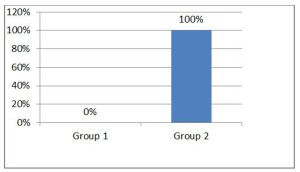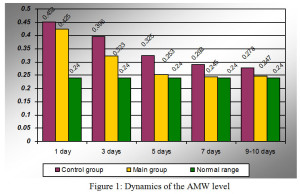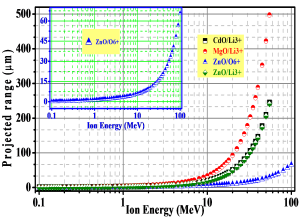Download Research Article Template
Research Article
These are detailed studies reporting original research and are classified as primary literature. They include hypothesis, background study, methods, results, interpretation of findings, and a discussion of possible implications. Original research articles are long, with the word limit ranging from 3000 to 6000 and can even go up to 12000 words for some journals. These require a significant investment of time.
Outlines of Research article
- Title
- Authors’ full names and affiliations, corresponding author marked
- Name of corresponding author along with phone E-mail information
- Abstract
- Key words
- Abstract
- Introduction
- Materials And Methods
- Results And Discussions
- Conclusion
- Figures & Tables legends
- Tables
- Figures
- Acknowledgments
- Conflict of interest
- Funding Source
- References
Title
The title of the manuscript should be concise, specific and informative.
Example
Synthesis and Study of Microcrystalline Parameters with Electrical Conductivity of Al Doped Lithium Ferrites.
Authors’ names and affiliation: List here all author names Including address, academic qualifications and job titles of all authors, as well as telephone number and email address of the author for correspondence along with mentioning corresponding author with *,and the author are numbered accordingly by making number superscript.
First Author/corresponding author* [First Name Middle Name Last Name] 1
Second Author [First Name Middle Name Last Name]2
Third Author [First Name Middle Name Last Name]3
1. Professor, Department, Name of University, City, Country, Pincode Orcid ID
2. Assistant Professor, Department, Name of University, City, Country, Pincode Orcid ID
3.Assistant Professor, Department, Name of University, City, Country, Pincode Orcid ID
Example
John smith1*, Richard Gomez2, Stevens Gil Costa3
1. Professor, Department of Chemical Engineering, University of Uyo , Akwa Ibom, Nigeria, 520211 , Orcid ID :0000-000X-XXXX-XXXX
2. Assistant Professor, Department of Mechanical Engineering, Osmania University, Hyderabad, India, 500007 ,Orcid ID :0000-000X-XXXX-XXXX
3.Assistant Professor, Department of Chemistry, Kassala University, Kassala State, Sudan, 825324, Orcid ID :0000-000X-XXXX-XXXX
For correspondence:
Email: corresponding.author@univ.com
Address: Professor, Dept.of.Civil Engineering,
Name of University, City,
Country, Pincode
Abstract: The Abstract should start on a new page, the aim of the abstract is to concisely describe the content of the paper. It should clearly and accurately summarize the main focus of the study. The word count should be under 250 words. The Abstract should be written as a single paragraph without headers. Do not include any citations in the Abstract.
Key-words: The keywords will highlight the beneficial area, mechanism(s) of action, key compounds and so on. Provide four to eight appropriate key words after abstract which should be separated by semi colon.
Introduction: Shall start immediately after the Abstract, as the next paragraph. The Introduction should lead the reader to the importance of the study; tie-up published literature with the aims of the study and clearly states the rationale behind the investigation.
Figure 1 – Legend for Fig. 1 to be typed here
Materials and Methods: Shall start as a continuation to introduction on the same page. All important materials used along with their source shall be mentioned. The main methods used shall be briefly described, citing references. Trivial details may be avoided. New methods or substantially modified methods may be described in sufficient detail. The statistical method and the level of significance chosen shall be clearly stated. Material Science Research India prefers to publish work that has been subjected to an appropriate statistical test at one level of significance.
Figure 2 – Legend for figure 2
Results: The Results section should contain details of all of the experiments that are required to support the conclusions of the paper. All findings presented in tabular or graphical form shall be described in this section. The data should be statistically analyzed and the level of significance stated. Data that is not statistically significant need only to be mentioned in the text – no illustration is necessary.
Table 1: Legend for table 1
|
S.No. |
Sample code |
Cut-off wavelength (nm) |
Eopt (eV) ±0.01 |
ΔE (eV) ±0.001 |
|
1 |
GE0Y0 |
400 |
3.02 |
0.152 |
|
2 |
GE2Y0 |
408 |
2.96 |
0.148 |
|
3 |
GE0Y2 |
409 |
2.95 |
0.148 |
|
4 |
GE2Y2 |
419 |
2.89 |
0.144 |
|
5 |
GE4Y2 |
425 |
2.85 |
0.139 |
|
6 |
GE6Y2 |
431 |
2.80 |
0.135 |
|
7 |
GE8Y2 |
427 |
2.83 |
0.138 |
|
8 |
GE10Y2 |
423 |
2.86 |
0.141 |
Discussion: The Discussion should include the major conclusions and interpretations of the work along with some explanation on the significance of the conclusion. This section should follow results, deal with the interpretation of results, convey how they help increase current understanding of the problem and should be logical. Unsupported hypothesis should be avoided. The Discussion should state the possibilities the results uncover, that need to be further explored. There is no need to include another title such as “Conclusions” at the end of Discussion. Results and discussion of results can also be combined under one section, Results and Discussion.

Figure 3 : Legend for figure 3
Tables and Figures: All Tables and figures must have a title or caption and a legend to make them self-explanatory.
Note: Tables and figures should be in good quality, please follow the link below:
Acknowledgements: Please acknowledge anyone who made significant contribution towards the article and it should be given after the text and not in the form of foot-notes.Funding sources should not be included in the Acknowledgment section.
Conflict of interest: All financial and non-financial competing interests must be declared in this section. In cases where there is no conflict of interests, authors should state that “The author(s) declare(s) that there is no conflict of interests regarding the publication of this article”. Otherwise, they should mention any conflict of interest in this section of the manuscript.
Funding Source: All sources of funding for the research reported should be declared. The role of the funding body in the design of the study, analysis, and interpretation of data while writing the manuscript should be declared. If there is no funding source then “The author(s) declare(s) that the funding is done by author only.
References: Any reference taken from other sources should be cited in the reference list in the order in which they appear, first through the text, then through the table and figure legends. References are listed at the end of the manuscript in the text, cite the reference number in square brackets in all the above content of manuscript.
For Journal
Name of Author(S), title, Journal Name, Volume, Issue , Page Nos. and Year.
Note: Name of Author should be as (Last name initial followed by first name) and Journal name should be in italics.
Example: E. J. Neer, T. Kozasa, Sites for Gα binding on the G protein β subunit overlap with sites for regulation of phospholipase Cb and adenylyl cyclase. J. Biol. Chem. 273, 16265-16272 (1998).
For Book
Author’s Name, Title of the Book, Name And Location Of Publisher, Page And Year of Publication.
Example: Greenstein J.P. and Winitz M., Chemistry of Amino Acids, Vol. II, John Wiley, New York, 1009 (1961).
Technical reports
D. E. Shaw, Technical Report CUCS-29-82 (Columbia University, New York, 1982).
Proceedings
Title of Symposium Published as a Book, sponsoring organization, city and state of meeting, inclusive dates and year (publisher, publisher’s city and state, year).
Theses and unpublished material
B. Smith, thesis, Georgetown University, Washington, DC (1973).
J. A. Norton, unpublished material.
 Material Science Research India An International Peer Reviewed Research Journal
Material Science Research India An International Peer Reviewed Research Journal


